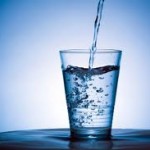 What do carpets, apparel, upholstery, food wrappings and fire-fighting foam have in common? Answer: They all contain Per- and polyfluoroalkyl substances (PFAS)! A new Harvard study confirms that unsafe levels of these chemicals are now present in the drinking water of at least 33 states. For decades, they have been used in hundreds of industrial applications and consumer products and are now showing up in both the environment and in the blood samples of the general U.S. population. Please read on to find out what dangers these chemicals pose to your and your family’s health.Why are they so bad for us and what are the effects on our health? These chemicals are persistent, and resist degradation in the environment, which means that they bio-accumulate, meaning their concentration increases over time in the blood and organs. At high concentrations, certain PFAS have been linked to adverse health effects, such as cancer, hormone disruption, high cholesterol, and obesity. The study found that PFASs were detectable at the minimum reporting levels required by the EPA in 194 out of 4,864 water supplies in 33 states across the United States. The highest concentrations were found in the following 13 states: California, New Jersey, North Carolina, Alabama, Florida, Pennsylvania, Ohio, New York, Georgia, Minnesota, Arizona, Massachusetts, and Illinois, in order of frequency of detection. Reason for this seems to be proximity to industrial sites that manufacture or use PFASs; at military fire-training sites and civilian airports where firefighting foam containing PFASs is used; and at wastewater-treatment plants. Discharges from these plants — which are unable to remove PFASs from wastewater by standard treatment methods — appear to contaminate groundwater. So could the sludge the plants generate, which is frequently used as fertilizer (?!).
What do carpets, apparel, upholstery, food wrappings and fire-fighting foam have in common? Answer: They all contain Per- and polyfluoroalkyl substances (PFAS)! A new Harvard study confirms that unsafe levels of these chemicals are now present in the drinking water of at least 33 states. For decades, they have been used in hundreds of industrial applications and consumer products and are now showing up in both the environment and in the blood samples of the general U.S. population. Please read on to find out what dangers these chemicals pose to your and your family’s health.Why are they so bad for us and what are the effects on our health? These chemicals are persistent, and resist degradation in the environment, which means that they bio-accumulate, meaning their concentration increases over time in the blood and organs. At high concentrations, certain PFAS have been linked to adverse health effects, such as cancer, hormone disruption, high cholesterol, and obesity. The study found that PFASs were detectable at the minimum reporting levels required by the EPA in 194 out of 4,864 water supplies in 33 states across the United States. The highest concentrations were found in the following 13 states: California, New Jersey, North Carolina, Alabama, Florida, Pennsylvania, Ohio, New York, Georgia, Minnesota, Arizona, Massachusetts, and Illinois, in order of frequency of detection. Reason for this seems to be proximity to industrial sites that manufacture or use PFASs; at military fire-training sites and civilian airports where firefighting foam containing PFASs is used; and at wastewater-treatment plants. Discharges from these plants — which are unable to remove PFASs from wastewater by standard treatment methods — appear to contaminate groundwater. So could the sludge the plants generate, which is frequently used as fertilizer (?!).
So what can we do to minimize our exposure to these chemicals? Well, again, sad, but true, you get what you pay for. Paying for clean, safe drinking water seems just like another expense to add to our already strained budgets, but it appears that this is no longer optional.